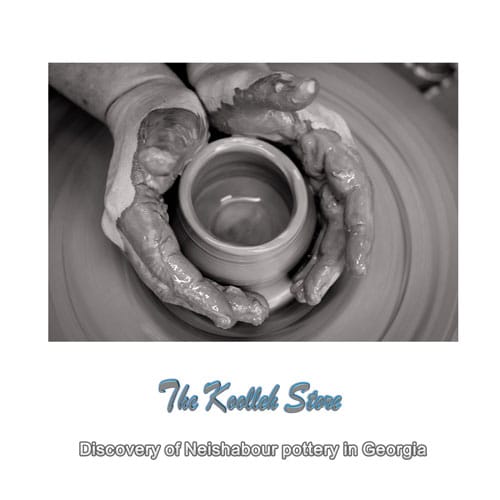Discovery of Neishabour pottery in Georgia

Public Relations of the Cultural Heritage and Tourism Research Institute, Dr. David Brickashville, faculty member, head of the Archeology Department and director of the International Archaeological Center of the University of Georgia, spoke at a scientific-specialized meeting introducing the ancient city of Samshvilde, organized by the Archaeological Research Institute.
He first introduced the Archaeological Center of the University of Georgia and outlined its goals and activities.
Referring to the important position of the city of Samshville in the South Caucasus, he said: This city has been one of the important highways of the Silk Road and for this reason, various powers have long been interested in dominating it.
He said: Archaeologists have not yet been able to find the Achaemenid layer during the excavation season, but in the upper layers, several pieces of pottery that archaeologists speculate have been found. During this period, it was discovered that tests would be performed if reliable and reliable.
The head of the archeology department of the University of Georgia stated: In the discussion of the Achaemenid presence, we can only speak based on archeological excavations, while the written Georgian and non-Georgian sources point to the presence of Sassanids in this city.
The head of the research project of archeological excavations in the ancient city of Samshvildeh said: On the other hand, in the early stages of excavations, artifacts from the Sassanid period have been discovered in this city, which confirms the presence and correspondence of Sassanids in this city.
Referring to the vastness of the ancient city of Samshvildeh, he explained: Due to the vastness of this city, the archeological group has been able to focus only on the main castle section, so that 99 trenches have been identified inside this fort, but only 4 trenches have been excavated. Shows Sassanid.
According to him, the archeological team is currently excavating the remains of a 12th-century palace built on older layers, so that as the work progressed, it became clear that the palace was located on a wall dating back to the 8th and 9th centuries. .
He added: The vessels discovered in this place belong to different periods due to various constructions and soil turbulence, but it is not difficult for archaeologists to identify the type and period of these vessels.
He said: Among the pottery vessels that have been discovered, which are domestic and foreign production, a beautiful glazed container has been discovered, the like of which does not exist in the Caucasus region.
The member of the faculty of the University of Georgia stated: Studies have shown that the originality of this dish dates back to the most important pottery center of the 11th century AD (5th century AH), namely the city of Neishabour, Khorasan.
He pointed out that, of course, this dish belongs to the Neishabour school in terms of glaze, coloring and decorations, but it was certainly not made in Neishabour and is only an imitation of Neishabour pottery.
He added: The second site of archeology in this city was the cathedral with an area of 100 square meters, and by excavating it, we found that a number of burials were buried in the Christian tradition and some in the Islamic tradition and facing the qibla.
Unfortunately, for a long time the two countries were separated due to political issues and there was no possibility of joint scientific and research activities between them, said Konstantin Topuria, President of the University of Georgia.
He added: Fortunately, since the day of Georgia’s independence, the historical relations between Iran and Georgia have returned to their original state, and the relationship between the two countries in the fields of research and science has accelerated and developed day by day.
Referring to the Memorandum of Understanding between Georgia University and Payame Noor University of Iran, he added: Payame Noor University has established its foreign branch at the University of Georgia and Georgia University has a branch at Payame Noor University of Iran, which has led to improving education and research.
Topuria declared the city of Samsuville as one of the most important archeological sites in Georgia and added: Georgian University has started archeological excavations in this area with the special permission of the Antiquities Agency of this country.
Referring to the discovery of the Sassanid layer in the ancient city of Samshvildeh, he stated: Written sources indicate the importance of this city for Iran and Georgia.
He added that Georgia’s only university is exclusively engaged in archeological excavations in the city of Samshvilde: This university has set up a research center and workshops for young people and teenagers in the ancient city of Samshvildeh.
In the end, he expressed hope that this ancient city would be the basis for joint cooperation between Iran and Georgia.

